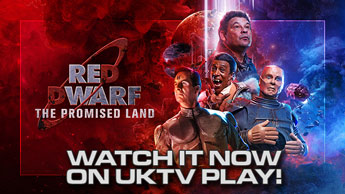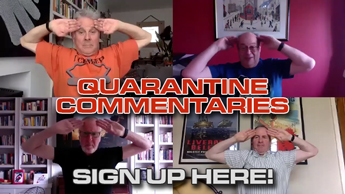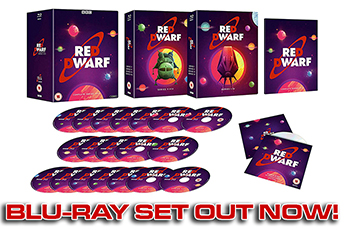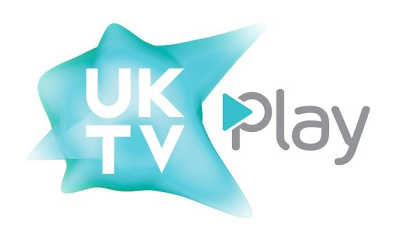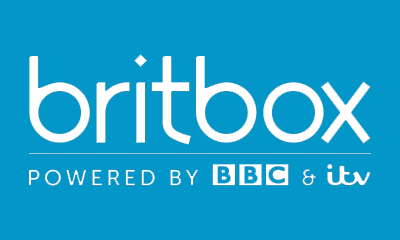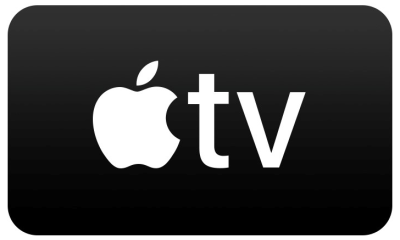 |
Smeghead Snapshots For Series III, Red Dwarf's official photographer was Paul Grant. Mr Flibble forces him out from behind the camera... |

Andrew Ellard
Mr Flibble whipped out a camera and began snapping everything in the room. Andrew shrugged and began the interview with Paul. First of all, can you tell me a little about your BACKGROUND and career before the Red Dwarf gig?
I was the kid at school who was always drawing, didn't matter what lesson it was, even games. My parents had to fork out for just the one sports kit when I hit Salford Grammar. It lasted all the way up to sixth form! By then it would have been a little tight under the armpits, but was as good as new [because] I had worn it only once. I did my degree in fine art, specialising in photography, and was the architectural photographer at the Courthauld Institute of Art when work on Series III began.
When was the 'Grant Naylor' two-headed photo taken and created? And whose idea was that?

That was for a Faber and Faber book 'The Inside Story Of Spitting Image' back in 1986 which just required a portrait of Rob and Doug together for the inside spread. We all thought that it should be something a little special, something that would really stand out, so I shot a number of different approaches. One was a breakfast scene with their heads in egg cups, another as ornaments on a fireplace, then a Hollywood-style shot with lots of hands coming in to light their cigarettes. The trickiest of all was the Siamese head, which was the one we all opted for. At that time I did all the image manipulation in camera and in the darkroom - there was no such thing as Photoshop until the late 80s.
With three rolls of film spent, Mr Flibble noticed that the lens cap was on. Andrew began to ask about Paul's arrival as photographer on SERIES III...
Until Series III the Beeb were responsible for the photos, but then their rules changed about independent production companies and that allowed Grant Naylor a little freedom to deal with more of their own publicity material. I had done production stills before, so Doug and Rob asked if I would be interested in doing stills for Series III - I put in a price, they offered less, and I said great.
The first Dwarf photographs I made were at a rehearsal in London early on, when Norman Lovett played Holly. I was pretty sure that Red Dwarf would be a success, and I thought there should be some record right from the start so I persuaded Rob and Doug to let me tag along to one of those first rehearsals. There's a great shot of Doug holding the Junior Encyclopaedia of Space. I love that shot.
Did being Rob's brother give you more access than other photographers might have had?
No, it didn't give me more access, but what it did do was give me the advantage of a clear overview of what Red Dwarf was essentially. Rob and Doug were a powerful presence on set, but as a photographer you have to work closely with the whole production team and nobody gets any special privileges when there are deadlines to meet and rules are written in stone.
What are your memories of Rob and Doug from that time?
Busy, but never too busy to listen. I think everyone on set had absolute confidence in them. They were writers, producers, directors, fixers and agony aunts. They were pretty good drinking partners too...
Humouring his new-found love of photography, Andrew suggested Mr Flibble take a picture of him. Mr F looked Andrew up and down before deciding that there isn't enough Vaseline in the world. Paul, what were your priorities ON SET?

Because it was not possible to be on site for every day of the filming process, they booked me in so that it would coincide with the key features of the series. In real terms that meant 'work your butt off while you are there and miss nothing'.
The stills photographer isn't allowed to shoot on set while the cameras are rolling, so the only time that you get with the actors in full costume and make up is during the camera rehearsal - and at that point you've no idea where the cameras are going to be moving, so you have to keep one eye on the action with the other on the cameras and the boom guys. If you get in the way then you'd better have a thick skin! So I never close one eye when photographing on set.
What was the atmosphere like?
It was hilarious and totally exhilarating, everybody was working full tilt to get the best out of everybody else and failure just wasn't an option. They had a really good team of people who were all working together in pursuit of excellence.
Who does the photographer deal with most during filming?
As a stills photographer, your first point of reference is the floor manager. Floor managers are easy to recognise because they are the red-faced ones who have to translate the stream of abuse that floods into their earpiece from, say, 'Kill the bastard!' to 'Could we take that again from the top please?'
Mr Flibble remembers being yelled at on-set - just for taking a short, twelve-hour break! On a complicated shoot like Dwarf, is it hard to get time with THE CAST for character shots?
Yes it is. There are so many things that are higher on the priority list than a stills photograph. Make up artists stick to cast members like pilot fish to a shark, wardrobe aren't far behind, then there's the director's pep talk and so it goes until right at the end you just might get a look in, and if you do then you had better make it work.

How did each of the main cast differ when it came to being photographed?
All of them were willing subjects so I never had to put up with any prima donna tantrums, but I guess it was most difficult for Rob Llewellyn because he was in a permanent state of discomfort. Fortunately, under all that make-up, you couldn't tell.
Do you have any stories from the location shoots?

I guess that top of the list would have to be Koo Stark's appearance on set for Timeslides because I've never, before or since, witnessed so many men rendered incapable of coherent speech. The whole place was filled with carpet tongues and spring-loaded eyeballs!
You also did some great publicity shots of the guys on a black background...
It was my idea to shoot the central characters out of black to show off the excellent costumes designed by Howard Burden without any background clutter. So I set up a room with lights and background and no distractions, and asked each of the cast to come up between scenes.

Your pictures are a little more STYLISED than most BBC comedy stills - was this something specifically decided upon for Dwarf, or part of your style anyway?
Whatever I do I always impose my own style it's part of the process - the where, when and how of it all. At the Red Dwarf III shoots I also had the advantage that John Pomphrey was stretching his arm lighting the sets so that they wouldn't look so video-like, and John was always happy to answer my questions about anything from colour temperature to hotspots and fade points.
Certainly, you seem to have taken time to get shots of the production itself, as well as publicity photos...
On a production like the Dwarf there is always something going on, and my approach was that the fans would want to be able to nose around the back scene stuff too. I remember talking to Robert Llewellyn about the amazing make-up process for Kryten and how he was the only guy who had to get up so ridiculously early in the morning to get ready for the day's shoot. I thought it would be a good idea to follow the process from soup to nuts, so the next morning I joined him to witness the ordeal. [The] thing is, everyone involved with Red Dwarf was a hundred per cent dedicated to it and I wanted to show that in [my] work.
Mr Flibble has always demanded image approval (he's never got it, but he keeps demanding anyway); how are images selected from the rolls after filming is over?
If you have done your job well it shouldn't be difficult to pull out the key shots for each episode. The final choice is always arrived at through discussion. I try and guide the client to go for the shots that precede or suggest the action so that the pictures narrative doesn't give the punch-line away.

You were also involved in designs for the BETTER THAN LIFE book cover...
By the time of the Better Than Life cover I had been doing a lot of photographs for book covers, so it was a familiar process for me. Rob and Doug had been disappointed with the roughs that had been produced by their publisher and they asked for my help. They had a clear idea what they wanted, something funny and absurd, and came up with the li-lo in space idea. To help me with the illustration I first set it up as a photograph, using a self timer with me as the model, so those are my very own dirty feet on the front and toenail clippings on the back. The beer belly is pure fiction, of course...
Finally, bring me up to date with your career now - what have you been doing since...well, since 1989?
Things have really changed since that time. I've continued making images for publishing and advertising, and have produced a major exhibition of portraits which has been shown both in England and France. You can view some of these images on my temporary website. [Available via Wormholes.]
However the biggest shift has been in my passion for digital technology. I jumped in with both feet like a kid at the seaside! The double headed portrait would be a cinch now, instead of the three days slog in the darkroom that it was, it would take a few minutes of fun with my Wacom tablet and Photoshop. It is better than life! Nowadays I am as likely to be at my computers totally absorbed in 3D design with LightWave and Maya as I am working with cameras. Right now I am producing my own 3D animation - but that's another story...
Mr Flibble enjoyed talking to Paul Grant, and now that it's over... Mr Flibble is very cross.

